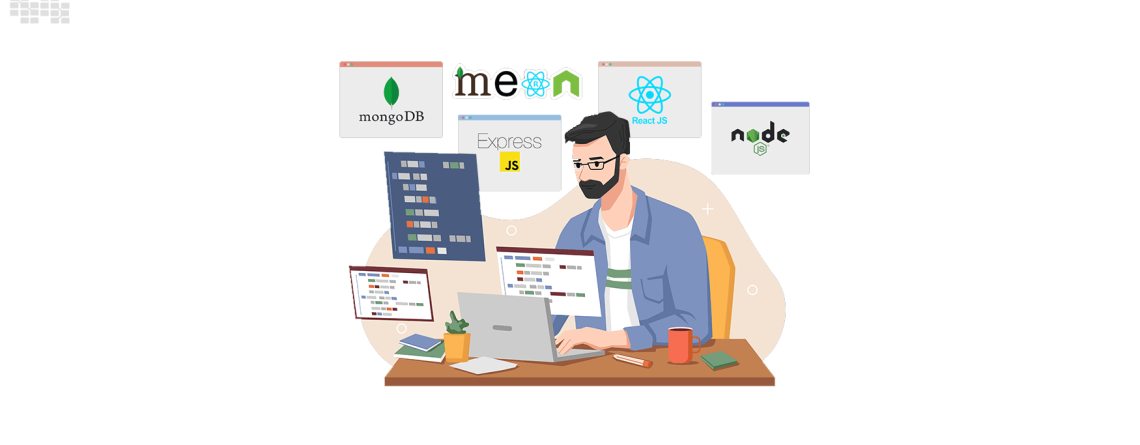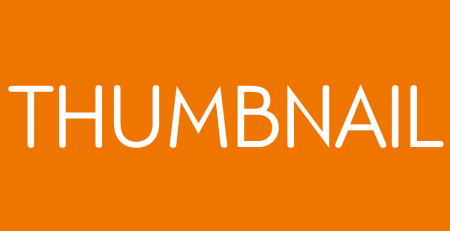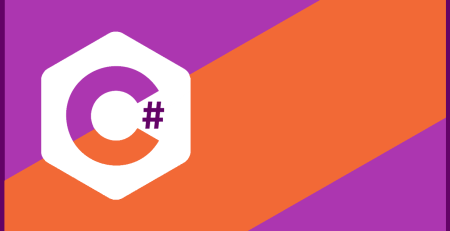Empowering Your Full-Stack App with Free Hosting Solutions
Table of Contents
Introduction
In the rapidly changing world of technology, creating a robust and effective full-stack application is just half the fight. Finding the ideal hosting option that not only meets the requirements of your app but also suits your budget is the other essential component. Thankfully, there are many of cost-effective free hosting options that can power your full-stack application. We will examine the best practices and tools in this extensive guide to help you maximize the potential of your application while minimizing expenses.
Understanding the Importance of Hosting
In the rapidly advancing field of technology, where full-stack application development is at the forefront, the importance of hosting cannot be emphasized. Your application’s core is its hosting, which affects its functionality, usability, and performance in general. We’ll examine the significance of hosting in this article and discuss why it’s essential to the success of your full-stack application.
1. Performance Enhancement
Hosting is responsible for improving the performance of your full-stack application. The speed at which your application loads and responds to user input is directly impacted by the hosting environment. Of course, reducing latency with a hosting solution that is optimized well ensures you have users interacting seamlessly and responsively to your application.
Now imagine that your application is running on a server with fast CPUs, sufficient RAM and stable network connection. Your full-stack application will likely operate quite smoothly in such an environment and deliver effortless user experience. Conversely, poor hosting may lead to slow loading times, more downtime and frustrated customers.
2. Scalability for Growth
Scalability becomes important as your full-stack software becomes more well-known and engages more users. Your application’s potential to scale is greatly aided by hosting options. If you add new features that need more resources or your user base expands tenfold, a scalable hosting environment can easily adapt to these changes.
For example, cloud hosting companies provide scalable solutions that let you modify your resources in response to your full-stack app’s changing requirements. Because of its scalability, your application will always be online and responsive, even during spikes in traffic or demand.
3. Reliability and Uptime
Your full-stack application’s dependability is closely related to the hosting environment. Consumers anticipate that your application will always be accessible, and any interruptions may erode their confidence and dissatisfaction. In order to reduce the chance of downtime, dependable hosting solutions include redundancy, backup systems, and failover procedures.
One way that cloud hosting companies lessen the possibility of a single point of failure is by spreading data throughout several servers and data centers. Your full-stack application will always be accessible thanks to our distributed design, even in the event that a single server or data center malfunctions.
4. Security Measures
Your full-stack application’s security is of utmost importance, and hosting is essential to protecting both your application and its data. To guard against any dangers, reputable hosting companies have strong security measures in place, such as firewalls, encryption, and frequent security upgrades.
Selecting a hosting service that puts security first reduces the possibility of illegal access, data breaches, and other security flaws. This preserves your full-stack application’s integrity and reputation in addition to protecting sensitive user data.
5. Geographic Accessibility
In our interconnected world, where users access applications from diverse locations, the geographic accessibility of your full-stack app is vital. Hosting solutions with a global network of servers and content delivery networks (CDNs) ensure that your application loads quickly for users worldwide.
A strategically chosen hosting provider can distribute your app’s content across servers located in different geographic regions. This reduces latency and improves the loading times for users, regardless of their location. The result is a more inclusive and user-friendly experience for your global audience.
The Power of Free Hosting
In the dynamic realm of full-stack application development, the choice of hosting plays a pivotal role in shaping the trajectory of your project. While numerous hosting solutions are available, the power of free hosting cannot be underestimated. This guide explores the transformative capabilities of free hosting for your full-stack app, shedding light on the advantages, considerations, and top platforms that empower developers to bring their creations to life without breaking the bank.
The Advantages of Free Hosting
1. Cost-Effective Solutions
Perhaps the most obvious advantage is the cost-effectiveness of free hosting solutions. Especially for startups, hobby projects, or developers on a budget, opting for free hosting can significantly reduce operational costs. It allows you to allocate resources to other critical aspects of development without compromising the performance of your full-stack app.
2. Accessibility to Emerging Developers
Free hosting opens up opportunities for emerging developers and hobbyists to experiment, learn, and showcase their skills. It eliminates financial barriers, enabling individuals with limited resources to deploy and share their full-stack applications with a global audience. This democratization of hosting fosters a more inclusive and diverse developer community.
3. Rapid Prototyping and Testing
For developers looking to quickly prototype or test a full-stack application, free hosting offers an efficient solution. Without the need for substantial financial investment, you can experiment with different technologies, frameworks, and features, facilitating a faster development cycle and agile iteration of your app.
4. Learning Opportunities
Free hosting platforms often provide additional tools, resources, and documentation. This creates a conducive environment for learning and skill development. Developers can explore best practices, understand deployment processes, and gain valuable insights into optimizing their full-stack applications.
Considerations When Choosing Free Hosting
1. Resource Limitations
While free hosting is a boon for many developers, it’s essential to be mindful of resource limitations. Free plans may come with restrictions on storage, bandwidth, and computing resources. Understanding these limitations and planning accordingly is crucial to prevent unexpected disruptions as your full-stack app grows.
2. Support and Community
Evaluate the level of support and the size of the community surrounding the hosting platform. Robust support and an active community can be invaluable when facing challenges or seeking advice. Platforms with engaged communities often provide a wealth of knowledge-sharing and troubleshooting resources.
3. Scalability Options
Consider the scalability options offered by the free hosting provider. As your full-stack app gains traction, you may need to scale your resources to accommodate increased traffic. Choosing a platform with smooth upgrade paths or affordable scaling options ensures seamless growth for your application.
Top 5 Free Hosting Solutions
While creating a full-stack application is a fascinating undertaking, selecting the appropriate hosting option is just as important. The popularity of free hosting options has grown in a world where financial limitations frequently influence decisions. This post examines the top five free hosting options that can enable your full-stack application to grow to new heights while still fitting within your budget.
1. Heroku
Heroku is a cloud PaaS that has become insanely popular because of its simplicity, scalability and ease-of use. This guide looks into the features, advantages as well considerations of deploying a full-stack app on Heroku to give you reasons why it has become preferred by developers in every corner of the world.
The Heroku Advantage:
User-Friendly Deployment:
Heroku takes the complexity out of deployment with its user-friendly platform. Developers can deploy their full-stack apps seamlessly by connecting their Git repositories to Heroku. This streamlined process allows for quick iterations and reduces the time and effort required for deployment.
Support for Multiple Languages:
One of Heroku’s standout features is its support for multiple programming languages. Whether your full-stack app is built using Ruby, Python, Node.js, Java, or other languages, Heroku provides a versatile environment that caters to diverse development needs.
Scalability without Headaches:
Scalability is a crucial factor in hosting, and Heroku excels in this regard. With a simple slider interface, developers can scale their applications vertically by adjusting the number of dynos (containerized lightweight Linux containers) with ease. This allows for seamless handling of traffic spikes or increased demand.
Robust Add-On Ecosystem:
Heroku offers a wide array of add-ons that enhance the functionality of your full-stack app. Whether you need a database, caching, monitoring, or other services, the Heroku Add-ons marketplace provides a rich ecosystem of third-party tools that integrate seamlessly with your application.
Continuous Integration and Deployment (CI/CD):
Heroku supports robust CI/CD pipelines, enabling developers to automate the testing and deployment processes. By integrating with popular CI/CD tools, you can ensure a smooth and reliable deployment workflow, reducing the risk of errors in production.
Considerations When Using Heroku:
Resource Limitations:
While Heroku’s free tier is generous, it comes with certain limitations on resources. Understanding these limitations is crucial to avoid unexpected disruptions as your full-stack app scales. Monitoring resource usage and planning accordingly is essential for a seamless hosting experience.
Pricing Structure:
While Heroku offers a free tier, it’s important to be mindful of the pricing structure as your application grows. Scaling resources or opting for additional add-ons may incur costs, and understanding the pricing details is essential for budget planning.
Community and Support:
Heroku boasts a vibrant community and provides extensive documentation. However, for more complex issues, understanding the level of support available is crucial. Consider exploring community forums, documentation, and customer support options to ensure you have the resources needed for troubleshooting.
Best Practices for Heroku Hosting:
Code Optimization:
Efficient coding practices contribute to better performance and reduced resource consumption. Minimize unnecessary code, optimize queries, and leverage caching to ensure your full-stack app operates smoothly within Heroku’s resource constraints.
Monitoring and Alerts:
Regularly monitor your app’s resource usage on the Heroku dashboard. Set up alerts for resource-intensive processes to proactively address potential issues and ensure a stable and reliable user experience.
Security Measures:
Implement security best practices to safeguard your full-stack app. Heroku provides features like automated SSL certificates, but developers should also take additional measures, such as securing sensitive data and following secure coding practices.
2. Netlify
Selecting the ideal hosting platform is essential for maximizing the potential of your full-stack application in the fast-paced world of online development. In the developer community, Netlify is a potent platform that is well-known for hosting serverless applications and static websites. It has changed the game. This tutorial demonstrates how Netlify’s special features may elevate your development experience by going over the features, advantages, and things to think about while hosting your full-stack application on the platform.
The Netlify Advantage:
Continuous Deployment Excellence:
Netlify excels in continuous deployment with its seamless integration with version control systems like Git. As you push changes to your repository, Netlify automatically builds and deploys your full-stack app, streamlining the development workflow and ensuring rapid iteration.
Global Content Delivery Network (CDN):
With a global CDN at its core, Netlify ensures optimal performance for your full-stack app worldwide. Static assets are distributed across strategically located servers, reducing latency and improving loading times, providing a superior user experience for audiences across the globe.
Serverless Functions Support:
Netlify goes beyond static hosting by seamlessly supporting serverless functions. This capability allows you to incorporate dynamic backend functionality into your full-stack app without the need for managing servers. Netlify Functions provide a serverless architecture, enhancing scalability and reducing operational overhead.
Effortless Integration with Git:
Netlify’s deep integration with Git repositories simplifies the deployment process. Whether your full-stack app is a single-page application (SPA) or a more complex project, Netlify’s straightforward setup allows you to focus on development while it takes care of the deployment pipeline.
Continuous Deployment Features:
Netlify’s continuous deployment features extend beyond the basics. With support for branch deploys, A/B testing, and rollbacks, developers can experiment and iterate with confidence. Netlify also offers automatic SSL certificate provisioning, ensuring a secure environment for your full-stack app.
Considerations When Using Netlify:
Static Website Focus:
While Netlify excels in hosting static websites and SPAs, it may not be the ideal choice for applications with extensive server-side logic. Consider the architecture of your full-stack app and ensure it aligns with Netlify’s strengths.
Resource and Function Limitations:
Netlify’s free tier comes with resource limitations, especially for serverless functions. Understanding these limitations and planning accordingly is essential to prevent unexpected disruptions as your application scales.
Pricing Structure:
As your full-stack app grows, evaluating Netlify’s pricing structure becomes crucial. Scaling resources or opting for additional features may incur costs, and understanding the pricing details is essential for budget planning.
Best Practices for Netlify Hosting:
Optimize Assets and Code:
Efficient coding practices and optimized assets contribute to better performance. Minimize unnecessary code, compress images, and leverage Netlify’s built-in features for asset optimization to ensure optimal resource usage.
Utilize Serverless Functions Wisely:
When incorporating serverless functions into your full-stack app, use them judiciously. Optimize the functions for performance, and consider other backend solutions for more resource-intensive tasks.
Global CDN Utilization:
Leverage Netlify’s global CDN to its fullest extent. Distribute your full-stack app’s content across strategically located servers to reduce latency and provide a faster and more responsive experience for users worldwide.
3. Firebase Hosting
In the ever-evolving landscape of web development, choosing the right hosting platform is paramount to the success of your full-stack application. Firebase Hosting, an integral part of Google’s Firebase platform, has gained prominence for its seamless integration, real-time capabilities, and robust features. This guide delves into the features, benefits, and considerations of hosting your full-stack app on Firebase Hosting, exploring how it can bring real-time interactivity and scalability to your development journey.
The Firebase Hosting Advantage:
Real-Time Updates:
Firebase Hosting seamlessly integrates with Firebase’s real-time database, offering developers the advantage of real-time updates for dynamic content. This real-time synchronization ensures that changes made to your full-stack app’s data are reflected instantly across all connected clients.
Automatic SSL Configuration:
Security is paramount, and Firebase Hosting takes the hassle out of SSL configuration by providing automatic SSL certificates. This ensures a secure environment for your full-stack app, with HTTPS enabled by default, contributing to user trust and data integrity.
Global Content Delivery:
Firebase Hosting leverages a global content delivery network (CDN), ensuring that your full-stack app’s static assets are distributed across servers worldwide. This global reach reduces latency, enhances loading times, and provides a seamless user experience for audiences across the globe.
Simple Deployment:
Firebase Hosting simplifies the deployment process with a straightforward command-line interface (CLI) and easy-to-use web console. Developers can deploy their full-stack apps effortlessly, focusing on building features rather than navigating through complex deployment procedures.
Integrated Analytics and Monitoring:
Firebase Hosting seamlessly integrates with other Firebase services, including Analytics and Crashlytics. This integration provides developers with valuable insights into user behavior and app performance, allowing for data-driven decisions and proactive issue resolution.
Considerations When Using Firebase Hosting:
Real-Time Database Considerations:
While real-time updates are a powerful feature, it’s essential to consider the nature of your full-stack app and whether Firebase’s real-time database aligns with your data structure and querying needs.
Resource Limitations:
Firebase Hosting’s free tier comes with resource limitations, especially in terms of hosting bandwidth and storage. Understanding these limitations and planning accordingly is crucial for a seamless hosting experience.
Pricing Structure:
As your full-stack app scales, familiarize yourself with Firebase Hosting’s pricing structure. Scaling resources or opting for additional Firebase features may incur costs, and understanding the pricing details is essential for budget planning.
Best Practices for Firebase Hosting:
Optimize Full-Stack App Architecture:
Leverage Firebase’s real-time capabilities by optimizing your full-stack app’s architecture to make the most of real-time updates. Design your data structure and queries to align with the strengths of Firebase’s real-time database.
Secure Firebase Database Rules:
Firebase Hosting is often used in conjunction with other Firebase services, such as the real-time database. Secure your data by implementing proper Firebase security rules to control access and prevent unauthorized actions.
Utilize Firebase Analytics:
Take advantage of Firebase Hosting’s seamless integration with Analytics. Monitor user behavior, track performance metrics, and gain valuable insights that can inform decisions for improving your full-stack app.
4. GitHub Pages
Selecting the best hosting platform in the wide world of web development is essential to the success of your full-stack application. When it comes to hosting static webpages straight from their repositories, developers can turn to GitHub Pages, a feature-rich tool provided by GitHub. This tutorial explains the benefits, drawbacks, and factors to take into account while hosting your full-stack application on GitHub Pages, demonstrating how it offers developers a streamlined and integrated solution.
The GitHub Pages Advantage:
Direct Integration with Git Repositories:
GitHub Pages stands out for its direct integration with Git repositories. Hosting your full-stack app on GitHub Pages means effortless deployment—simply push changes to your repository, and GitHub Pages will automatically build and update your hosted site. This streamlined process reduces friction in the development workflow.
Cost-Free Hosting:
One of the significant advantages of GitHub Pages is its cost-free hosting model. With GitHub Pages, developers can host their full-stack apps without incurring additional expenses. This is particularly appealing for individual developers, small projects, or those on a tight budget.
Support for Custom Domains:
GitHub Pages allows you to use a custom domain for your hosted full-stack app. This means you can seamlessly integrate your app with your brand, enhancing its professional appearance and creating a cohesive user experience.
Automatic SSL Encryption:
GitHub Pages provides automatic SSL encryption for your custom domain. This feature ensures that data transmitted between users and your full-stack app is secure, contributing to user trust and safeguarding sensitive information.
Community and Collaboration:
As part of the GitHub ecosystem, GitHub Pages fosters community and collaboration. Developers can leverage features like pull requests, issues, and GitHub Actions for CI/CD, creating a collaborative environment for maintaining and improving full-stack applications.
Considerations When Using GitHub Pages:
Static Website Limitation:
GitHub Pages is primarily designed for hosting static websites. While this makes it an excellent choice for front-end components of full-stack apps, it may not be suitable for dynamic server-side logic. Developers should consider the nature of their full-stack app architecture.
Resource and Bandwidth Limitations:
GitHub Pages comes with resource and bandwidth limitations, especially for larger projects. Understanding these limitations and planning accordingly is crucial for ensuring a seamless hosting experience.
Build Time Constraints:
GitHub Pages has build time constraints, and for larger projects, builds may take longer. Developers should be aware of these constraints, especially when deploying more complex or resource-intensive full-stack apps.
Best Practices for GitHub Pages Hosting:
Leverage Git Branches:
Take advantage of GitHub Pages’ support for multiple branches. You can host different versions of your full-stack app on different branches, allowing for staging environments or alternative versions.
Optimize for Performance:
Optimize your full-stack app for performance by minimizing unnecessary assets, leveraging caching, and employing best practices for responsive design. This ensures an optimal user experience on GitHub Pages.
Use GitHub Actions for CI/CD:
Implement GitHub Actions to automate your CI/CD pipeline. This allows for automated testing and deployment, streamlining the development process and reducing the risk of errors in production.
5. Vercel
In the dynamic landscape of web development, selecting the right hosting platform can greatly impact the success of your full-stack application. Vercel, a cutting-edge platform, has gained popularity for its focus on front-end hosting and serverless functions. This guide explores the features, benefits, and considerations of hosting your full-stack app on Vercel, showcasing how it can revolutionize your development experience and deliver next-level front-end experiences.
The Vercel Advantage:
Front-End Excellence:
Vercel stands out for its specialization in front-end hosting, making it an ideal choice for developers focusing on creating stunning and performant user interfaces. Whether your full-stack app is built with React, Vue.js, or Next.js, Vercel provides a tailored environment for front-end excellence.
Seamless Integration with Git:
Vercel’s seamless integration with Git repositories simplifies the deployment process. As you push changes to your repository, Vercel automatically builds and deploys your full-stack app. This continuous deployment approach enhances collaboration and streamlines the development workflow.
Serverless Functions Support:
Vercel goes beyond traditional hosting by seamlessly supporting serverless functions. This capability allows developers to offload specific tasks to the cloud, reducing the need for managing servers. Vercel’s serverless architecture enhances scalability and optimizes operational costs.
Global Content Delivery Network (CDN):
Vercel leverages a global CDN to distribute static assets, ensuring optimal performance and reduced latency for your full-stack app. This global reach enhances the loading times, providing a superior user experience for audiences worldwide.
Intuitive Platform and Deployment Settings:
Vercel’s user-friendly platform and intuitive deployment settings make it easy for developers to configure and optimize their full-stack app deployments. With features like environment variables, domain management, and deployment previews, Vercel empowers developers to tailor their hosting environment.
Considerations When Using Vercel:
Front-End Emphasis:
While Vercel excels in front-end hosting, it may not be the optimal choice for applications with extensive server-side logic. Developers should assess the architecture of their full-stack app and ensure that Vercel aligns with their project’s requirements.
Resource Limitations:
Vercel’s free tier comes with resource limitations, especially for serverless functions. Understanding these limitations and planning accordingly is crucial to prevent unexpected disruptions as your application scales.
Pricing Structure:
As your full-stack app grows, familiarize yourself with Vercel’s pricing structure. Scaling resources or opting for additional features may incur costs, and understanding the pricing details is essential for budget planning.
Best Practices for Vercel Hosting:
Optimize Front-End Performance:
Leverage Vercel’s focus on front-end hosting by optimizing your full-stack app for performance. Minimize unnecessary assets, implement lazy loading, and utilize Vercel’s built-in features for asset optimization.
Efficient Use of Serverless Functions:
When incorporating serverless functions into your full-stack app, use them efficiently. Optimize functions for performance, and consider other backend solutions for more resource-intensive tasks.
Leverage Deployment Previews:
Take advantage of Vercel’s deployment previews for testing changes before merging them into the main branch. This feature enhances collaboration and reduces the risk of introducing errors into the production environment.
Making the Most of Free Hosting:
While these free hosting solutions offer incredible opportunities, maximizing their potential requires strategic planning and implementation of best practices.
1. Optimize Code and Assets
Efficient coding practices and optimized assets contribute to better performance and reduced resource consumption. Minimize unnecessary code, compress images, and leverage browser caching to ensure your full-stack app operates smoothly within the constraints of free hosting.
2. Monitor Resource Usage
Regularly monitor your app’s resource usage to stay within the limits of your hosting plan. Set up alerts for resource-intensive processes and consider implementing optimizations based on usage patterns to ensure a stable and reliable user experience.
3. Leverage Content Delivery Networks (CDNs)
Utilize CDNs provided by hosting platforms to distribute your app’s content globally. CDNs reduce latency, improve loading times, and enhance the overall user experience for audiences around the world.
4. Explore Serverless Architecture
Consider incorporating serverless architecture into your full-stack app. Serverless functions allow you to offload specific tasks to the cloud, reducing the strain on your hosting environment and optimizing costs.
5. Backup Your Data
Even with free hosting, data security is paramount. Regularly back up your app’s data to prevent loss in case of unforeseen circumstances. Many hosting platforms offer automated backup solutions, providing an additional layer of protection for your full-stack application.
Conclusion:
In the dynamic landscape of full-stack application development, choosing the right hosting solution is a critical decision. The top five free hosting solutions mentioned here not only align with budget considerations but also offer powerful features for developers. By understanding their strengths, implementing best practices, and optimizing your code, you can unlock the full potential of these hosting solutions and empower your full-stack app to thrive without the burden of hosting costs. So, dive into the world of free hosting and witness your full-stack application break boundaries and reach new heights.











Leave a Reply